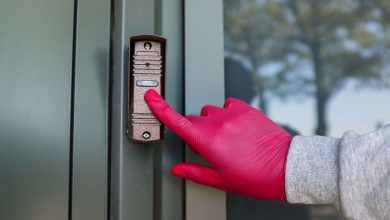How To Detect If My Home Security System Is Vulnerable? The Definitive Guide
KEY TAKEAWAYS
An internet-connected security system is a great idea in terms of safety for your home and family, but they are not without their flaws. The last thing you want is a loss of privacy due to a hacker accessing your cameras and other devices.
Whether you’re using professionally monitored security systems or your own DIY stand-alone cameras like Ring, Nest, or Arlo, knowing how to detect and prevent issues is a good way to protect your device’s security and data privacy.
Is my home security system vulnerable?
The short answer is yes, but there are varying degrees to this that need to be understood. For example, both professionally monitored security systems and DIY cameras like Google Nest and Wyze feature high-end encryption that, when regularly updated, provide a high level of protection from software or firmware vulnerabilities.
That being said, hacking, especially of do-it-yourself security systems, can still be compromised, which is why you need knowledge of possible ways that it could be hacked. However, while your home security system is vulnerable to attacks from hackers and you can’t be failsafe in protecting it, hacks can be preventable. Below we list some necessary measures compiled by our team that you can and should take to heighten your security system’s safety.
Measure #1: Securing the network
Your security system is highly reliant on your WIFI and home network. Just as you need a good locksmith, your wireless network should absolutely be password protected so it cannot be accessed by external parties (sorry, neighbors). We strongly recommend using a private network and hidden SSID.
The next step is about guaranteeing your router’s security. Make sure the login credentials and firmware are updated (and stay that way by checking them regularly). There is likely a range of router features that you won’t need or don’t use. Switch these off if possible, particularly Remote Administration and Universal Plug and Play (UPnP). You should also utilize effective encryption like WPA3 or WPA2.
Measure #2: Change your passwords regularly
One of the most common ways hackers infiltrate your system is with usernames and passwords found in other data breaches. This is important to note about password security in general online; using the same login (usually your email address) and password across multiple sites is a bad idea. It only takes one breach, and a hacker could have access to everything.
Your username and password for your security system should be unique compared to all your other passwords. The same rule applies to your wireless network as well. Try to avoid reusing old passwords as these may have been compromised in an older data breach. We know it’s annoying having to come up with creative passwords all the time, but safety first!
When it comes to creating a strong password, a combination of uppercase and lowercase letters, numbers, and symbols is recommended. Avoid personally identifiable information such as your name and birthday. This information is easily accessible online, making it easier for hackers to guess your combination. Also, always change your passwords regularly!
Measure #3: Two-Factor Authentication
An effective additional layer of security, Two-Factor Authentication, requires a code sent to your smartphone in a text message or email after you have entered your usual login credentials. This way, even if someone manages to get your credentials. This can make it near impossible for a hacker to access your account as they won’t have your phone or computer.
Measure #4: Unique logins for all users
Sharing is caring, but using one login across all of the users in your home is a surefire way to open up lots of backdoors to your security system. Instead, lower the security risk by giving every user a unique username and password. This not only means your credentials will be shared and written down less, but you’ll be able to see who has accessed the system or which profile may have been compromised.
Measure #5: Turn on notifications
They may be a touch annoying, but System Alert Notifications will alert you to unsuccessful login attempts to your account. If you receive one of these notifications, make sure you immediately change your password.
Measure #5: Update the cameras
Be sure to regularly update the software and firmware of your cameras. You will likely receive alerts when this is required, but it doesn’t hurt to check regularly as well.
Measure #6: Stay away from insecure websites
Too many ads and pop-ups are big red flags and likely a place where hackers are waiting. Enable ad blockers, anti-virus, or anti-malware programs and ensure the websites you visit are under the HTTPS protocol instead of HTTP.
HTTPS protocols have extra security, known as an SSL (secure sockets layer) certificate, protecting your private information from hackers.




